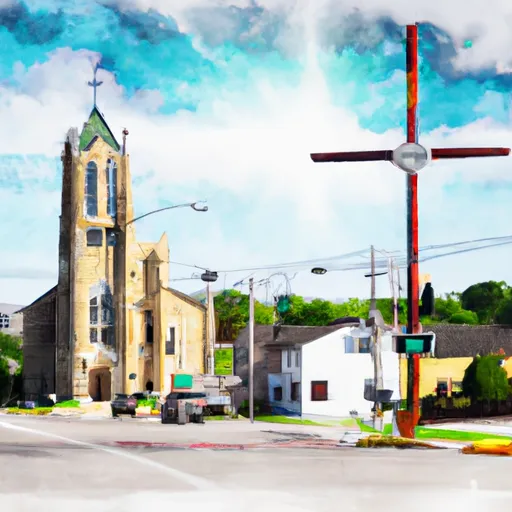°F
°F
mph
Windspeed
%
Humidity











Holy Cross is a small town in eastern Iowa, known for its pleasant climate, hydrological features, and outdoor recreation opportunities. The climate in Holy Cross is characterized by hot and humid summers, with temperatures often peaking in the low to mid-80s Fahrenheit. Winters are cold, with temperatures typically ranging from the mid-teens to mid-30s Fahrenheit. The area receives approximately 34 inches of rainfall each year, with the majority occurring during the spring and summer months.
Holy Cross is situated near the banks of the Mississippi River, offering various hydrological constituents. The river provides opportunities for boating, fishing, and water sports. Additionally, the area is known for its numerous creeks and streams, enticing nature enthusiasts and anglers.
Outdoor recreation opportunities in Holy Cross are plentiful. The town is surrounded by picturesque landscapes, including rolling hills, forests, and farmlands. Hiking, biking, and camping are popular activities in the area, with several parks and nature reserves nearby. Residents and visitors can also enjoy wildlife observation, birdwatching, and hunting in designated areas.
Overall, Holy Cross, Iowa offers a favorable climate, diverse hydrological features, and ample outdoor recreation opportunities, making it an appealing destination for nature lovers and outdoor enthusiasts.
Weather Forecast
Holy-Cross receives approximately 900mm of rain per year, with humidity levels near 83% and air temperatures averaging around 9°C. Holy-Cross has a plant hardyness factor of 5, meaning plants and agriculture in this region thrive during a short period during spring and early summer. Most plants will die off during the colder winter months.
Regional Streamflow Levels
1,730
Cubic Feet Per Second
50,400
Cubic Feet Per Second
749
Cubic Feet Per Second
48,600
Cubic Feet Per Second
Nearby Camping
| Camping Area | Reservations | Toilets | Showers |
|---|---|---|---|
| Rocky Springs - Natchez Trace Pkwy | |||
| Lamar Dixon Expo RV Center | |||
| Great River Road State Park | |||
| South Recreation Composite | |||
| Warfield Point Park | |||
| North Rec Composite |



